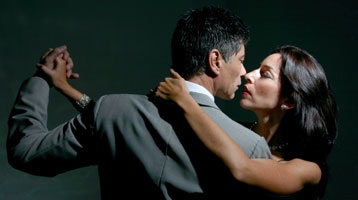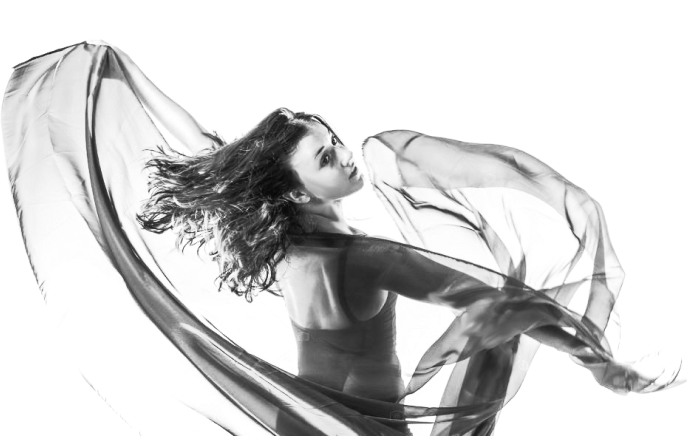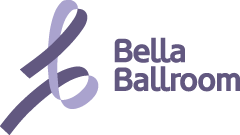
Social Dance
Argentine Tango
The Argentine Tango is a beautiful style of dance that is known for its elegance and sophistication. Argentine Tango dancing is done all over the world and throughout the United States. The Argentine Tango style differs a bit from Ballroom Tango. Ballroom Tango travels dramatically around the dance floor with long progressive steps, whereas Argentine Tango is suited for more intimate spaces and the focus is on rhythms and connections.
History of the Argentine Tango
Like many other styles of dance, the history of Argentine Tango is not completely known or agreed upon, however, there is a general shared theory of the dance’s beginnings. In the mid 1800s, the African slaves who had been brought to Argentina created influence on the local culture. The word “tango” was used to describe the place where African slaves and free blacks gathered to dance once Argentina banned slavery in 1853. The word “tango” may have been an African word which was originally translated to “reserved ground” or “closed place.” Others believe that “tango” derived from Latin derivate tanguere meaning “to touch”, which the African slaves picked up on Portuguese ships.
During the late 1800s and the early 1900s, Argentina had a large flux of immigrants arrive to the country. Argentina’s capital Buenos Aires had a population of 180,000 in 1869. By 1914, the population soared to 1.5 million people. A melting pot of cultures resulted from the intermixing of the native born Argentines with the arriving and settling African, Spanish, British, Russian and Polish. Everyone borrowed and shared music and dance from one another causing traditional polkas, waltzes and mazurkas to be mixed with the popular habanera from Cuba and the candombe rhythms of Africa.
The Argentine Tango developed in working-class neighborhoods of Buenos Aires throughout the 18th century. It was not a high-society dance, but instead was a social dance for cowboys (“gauchos”) and the girls who worked in the saloons. It’s most probable that the beginning forms of Tango dance were developed in African-Argentine venues that were patronized by young men, mostly native born of poor and mixed ancestry. These “compadritos” brought the dance to the slaughterhouse district of Buenos Aires known as Corrales Viejos. There tango dancing was introduced to bars, brothels, and dance halls. It was in these establishments the African rhythms met Argentina Milonga, a fast-paced polka music. Before long, new steps were invented and a new dance form was born that combined dance from many cultures.
While tango dancing was a dance born out of the poor barrios and shunned by the upper class, it eventually became accepted by the elite and a dance of National Argentinean pride. From Buenos Aires, tango dance spread to the provincial towns of Argentina and became very popular in the capital of Uragauy. Soon, tango dancing started spreading on a worldwide level.
The Argentine Tango travelled to Spain in the late 1800s, to Paris in 1907, and to London in 1912. As the dance travelled through Europe, the Tango was considerably cleaned up and became a favorite ballroom dance of European upper-classes. The Argentine Tango was introduced to the United States in the early 1920s and many of the Latin and “earthy” elements of the dance were reinstated.
Argentine Tango Dance Today
Today, the Argentine Tango is a popular social dance that is performed in night clubs and dance studios all over the world. In the United States there are a variety of tango festivals. The most popular are Tango Element in Baltimore, Maryland, Portland Valentango in Portland, Oregon and the Tango Festival in Denver, Colorado.
In February of 2009, the popular ABC series “Dancing with the Stars” announced that Argentine Tango would be added to the list of dances being competed by the 8th season dancers. This put Argentine Tango in the nation’s public eye and has inspired many new dancers to try Argentine Tango.
There are a variety of styles of Argentine Tango that are recognized by dancers today. Salon style tango is danced with an upright body posture with either an open or closed embrace with each partner’s center slightly offset from the other. In Milonguero style tango, dancers use a posture that is slightly leaning and partners typically join at the shoulders. Typically the follow’s body and head is so close to her partner that her left hand is placed far behind her partner’s neck. Orillero style tango dancing allows some distance in between partners allowing them to make steps outside of their embrace. It was developed in a setting where tango dancers had more room to maneuver thus they had more freedom spatially with their dance movements. Club style tango is the fusion of milonguero style tango and salon style tango. It is danced in a close embrace but also allows the couple to loosen for the woman to roate more freely. New style tango, also known as “tango nuevo”, is a style that closely examines the structure of the dance to create new combinations of steps and moves. Each dancer maintains their own axis and is danced in an open and loose embrace with an upright posture. Fantasia style tango is a show style of tango that is danced on stages. It combines various style of tango and is danced in an open embrace adding elements of show movements that are not included in social tango dancing. Canyengue is the historical form of tango dancing. The embrace is close and in an offset V. Dancers usually have bent knees as they move and dancers often use exaggerated body movements to accentuate their movements.
Argentine tango dancing is a prominent dance style all over the world. It’s rich history and culture are recognized and celebrated internationally.
Argentine Tango Music
- “Por Una Cabeza” (Scent of a Woman) Tango Project
- “Tango Fugata” Astor Piazzolla
- “Pa’ Bailar” Bajofondo Tango Club
- “La Cumparsita” Francisco Canaro
- “El Huracan” Juan D’Arienzo
- “Electro Tango” Bajofondo Tango Club
- “Pulmón” Bajofondo Tango Club
- “La Melodia de Nuestro Adios” Francisco Canaro
- “Santa Maria” Gotan Project
- “Yo Soy el Tango” Miguel Caló
- “La Cumparasita” Kristina Debarge
- “Las Grandes Orquestas del Tango” Francisco Canaro
- “Infiltrado” Bajofondo Tango Club
- “Soy Un Porteno” Francisco Canaro
- “Triptico” Gotan Project
- “El Tango de Roxanne” Moulin Rouge Soundtrack
- “Take it Easy” Kroke
- “Cinema Paradiso” (Tango version) Esteban Morgado
- “Bucina Nova (Make Maki)” Shantel
- “Esta Ramon Aqui?” A.P.P.A.R.T
- “Querer” Cirque du Soleil
- “Take Me to the River” Al Green
- “Let’s Stay Together”
- “Trouble Me” 10,000 Maniacs
- “Mi Corazón” Bafondo Tango Club
- “Tango” Cirque du Soleil”
- “Hey Sexy Lady” Shaggy
- “Tango the Night” Falco
- “U Got the Look” Prince
- “Tango D’Amore” Lisa del Bo
- “Sombra” Christina Aguilera
- “Bad Romance” Lady Gaga
- “Shut Up” Black Eyed Peas
- “Hernando’s Hideaway” Amerimambo
- “Little Drop of Poison” Tom Waits
- “Luna” Alex Kid
- “Assassin’s Tango” John Powell
- “Siempre Me Quedara” Bebe
- “Nature Boy” Quadro Nuevo
- “The Buenos Aires Mix” Gabriela Anders


